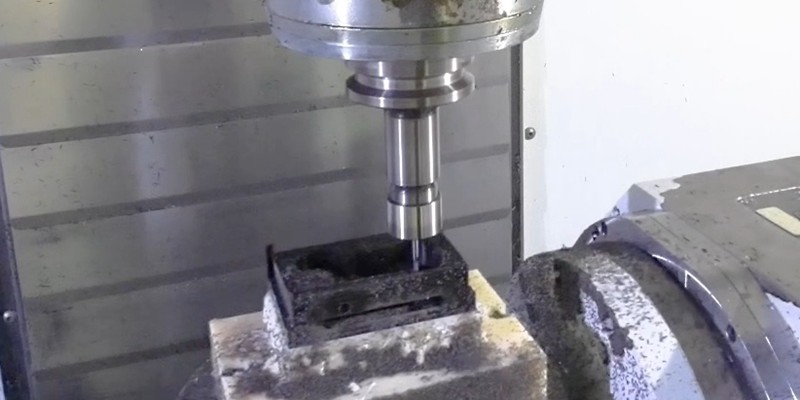- October 20, 2023
Polyoxymethylene (POM), known as acetal, polyformaldehyde, and polyacetal, is one of the plastic materials that has many benefits when it comes to CNC machining parts. This plastic has gained popularity across several industries with its exceptional qualities, advantages, and various uses. It is a dependable material for engineering applications due to its resistance to chemical dimensional stability, mechanical strength, and low friction.
So, what is POM? Is CNC machining POM ideal for making parts? Keep reading as we provide more information about machining POM.
What is POM Material?
POM is an engineering thermoplastic with several beneficial properties. Some of its properties include exceptional hardness, strength, and rigidity. Despite its capability of being made in various hues, its high crystalline content gives it a naturally opaque white appearance. POM has a density of between 1.410 and 1.420 g/cm³.
POM plastic is frequently used to create precise parts requiring dimensional stability, high rigidity, and low friction. This low friction makes POM ideal for rotating or sliding components such as bushings, bearings, and gears.
Like many other synthetic POM polymers, it is produced by several chemical firms using slightly varying formulae and sold under many brand names like Celcon, Tenac, Duracon, etc.
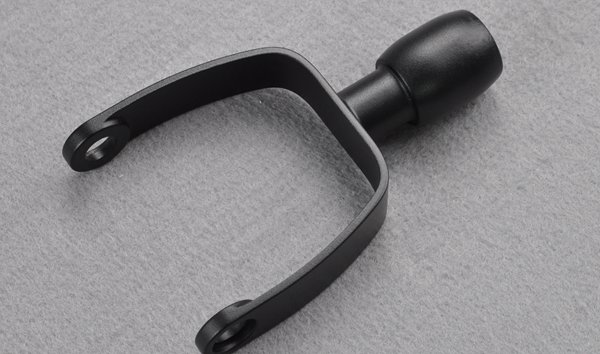
Properties of POM Plastic
The high-performance engineering plastic polyoxymethylene (POM) is widely used in many sectors. It qualifies for various applications due to its assortment of distinctive properties.
Low Friction and Wear Resistance
POM plastic stands out for having a low coefficient of friction, which helps to explain why it has such outstanding self-lubricating properties. Since there is less wear and more efficiency overall, fluid sliding or rotational movements are made possible by the reduced frictional resistance.
Chemical Resistance
POM is ideal for making products in constant contact with chemical solvents, such as pump parts, seals, and fuel system components. This is primarily due to POM plastic’s remarkable resistance to various chemicals, solvents, and fuels. It can resist contact with numerous organic chemicals, alcohols, oils, and greases without significantly deteriorating.
Low Water Absorption and Dimensional Stability
POM plastic has remarkable dimensional stability and keeps its size and shape even in changing humidity and temperature conditions. As a result of its minimal water absorption, it is not susceptible to moisture-related problems like swelling, warping, and other dimensional changes. Applications requiring accurate tolerances, as well as consistent efficiency, also depend heavily on POM’s dimensional stability.
Easy Machinability
The simplicity with which POM plastic may be machined makes precision and effective manufacturing procedures possible. It is easily molded, machined, turned, and drilled, making it easy to make intricate pieces and complex designs. Because of this characteristic, POM resin is frequently chosen for applications requiring complex geometries and great precision.
Excellent Creep / Impact Resistance
Excellent creep resistance is exhibited by POM plastic, which means it can withstand sustained mechanical stress without deforming. Due to this characteristic, POM components can continue functioning properly even when continuously subjected to loads or strains.
How to CNC Machine POM Plastic?
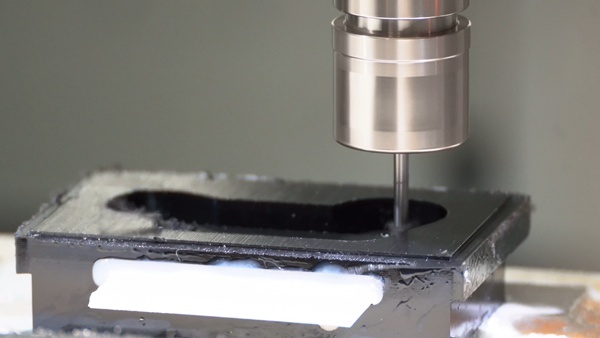
POM pieces can generally be machined in one of two methods. The first is using standard machining methods. A pre-machined POM item can be annealed as the second technique.
To machine POM, The first step in the process would be generating a CAD file of the part and then converting it into CAM for further conversion into G-code, which CNC machines can work with. Then, the next step is cutting the POM workpiece into specific sizes for easy placement on the machine bed. After cutting the POM workpiece to size, place it on the machine bed and hold it using a fixture, so it doesn’t move during machining.
It is important to ensure that the POM workpiece is affixed firmly in place, as the CNC cutting tools move using pre-set coordinates, and any change in positioning or alignment of the workpiece would influence part quality negatively.
After making sure that the POM workpiece is stable, use professional cutting tools affixed to the CNC machine to remove materials from the workpiece. The recommended cutting tool is a universal flat-end mill, as it offers more efficiency when machining plastics.
Finally, it is important you vacuum the CNC machine often when machining POM. This ensures that the chips from the material do not clog the end mill.
Benefits of CNC Machining POM Plastic Parts
POM CNC machining is a great option for producing high-quality custom-built parts across many sectors since it has the following benefits:
Uniformity
CNC machining offers consistently high-quality POM components for large-scale POM manufacturing with continuous excellent dimensions. This automated method ensures that every component is created uniformly to exact specifications for sectors needing dependable and accurate POM parts, like medical or aerospace.
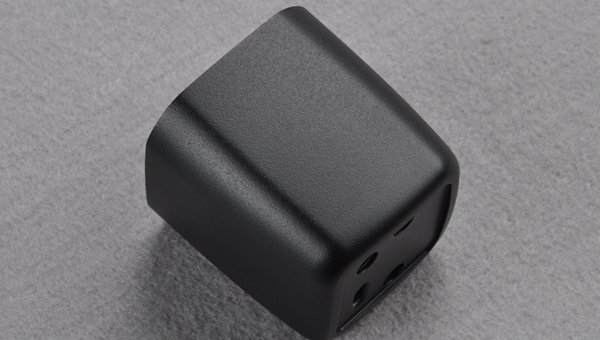
Quick Prototyping
Prototyping is an important step in product development, as it often shows manufacturers what the final product would look like. The quick creation of POM prototypes made possible by CNC machining aids in shortening the time it takes for novel products to reach the market.
Part Precision
Precision, accuracy, and tight tolerances are the hallmarks of CNC machining. Thus, POM components may be manufactured with great precision and accuracy using CNC machining since it supports complicated geometries and tight tolerances.
Improvement in Design Flexibility
Due to CNC machining’s fast design iterations, POM components may easily be modified during development without costly tooling modifications.
Post-processing Time Reduction
The nature of post-processing a product depends on the manufacturing procedure used. POM products manufactured using CNC machining often require less post-processing due to the manufacturing process’s high accuracy and ease of machining POM. This approach leads to cheaper manufacturing costs and quicker turn-around times.
Key Challenges for Machining POM Plastic
The primary issues with CNC machining are often cracking and deformation. There are two often occurring forms of cracking: one occurs directly during CNC machining, while the other occurs covertly and is typically brought on by internal tension.
Nonetheless, using quality materials for POM Machining could significantly help reduce the tendency for these challenges to occur. This is why it is often advisable to use modified POM materials for machining and conduct trial manufacture before the actual machining process to ascertain the level of material purity before committing to machining.
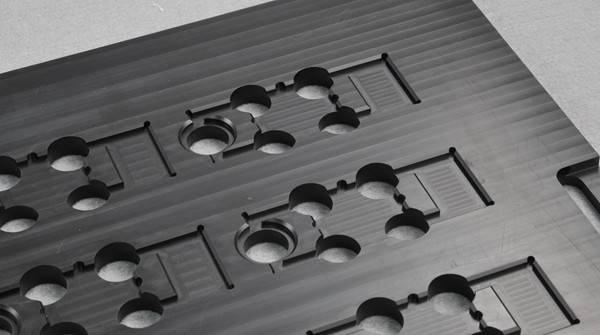
Deformation Causes and Solutions When Machining POM
Deformation is one challenge CNC machinists encounter when working with POM. Below are the four main courses of deformation and their solutions.
Cutting Heat
POM material has low thermal stability, is heat-sensitive, and is quickly distorted due to inadequate cooling after manufacturing. To combat this heat, you should make:
- The tool has to be sharp so that the heat produced when cutting is minimal;
- The quantity of cutting may be decreased, divided into many cuts;
- Increase the quantity of cooling liquid.
The goal is to minimize the formation of heat or quickly remove the heat produced during the cutting operation.
Internal Stress
Engineering plastics have a high thermal coefficient of expansion, thus when there is a considerable machining allowance, deformation will result from removing internal tension. To combat this:
- Choose and prepare materials properly;
- Utilize symmetrical POM processing to counteract the stress and deformation brought on by processing when the quantity of material removal is quite high;
- Regulate the margin, and attempt to insert as thick of a material as you can.
Clamping
When the POM material is clamped, it will distort, and once released, it will revert to its previous shape. One way to combat this is to enhance the workpiece’s contact surface by:
- Modify the clamping form. For instance, the bench vise cushions items and fixes them with glue;
- Vacuum suction cups may be employed for bigger plates, but a flat blank is required;
- Use suction cups to secure the smoothed surface after using adhesive to fix one side and then sweeping it.
Elasticity
The elasticity of the POM material is rather great. Due to the material’s elasticity, the component in touch with the tool will flex internally during cutting. The portion that has been cut and pressed will experience a little distortion once the tool has been removed. It is now required to make several tool-compensating changes per the cutting impact. Cutting repeatedly while processing a small amount of material helps lessen the dimensional distortion brought on by the material’s elasticity.
Applications of POM Parts
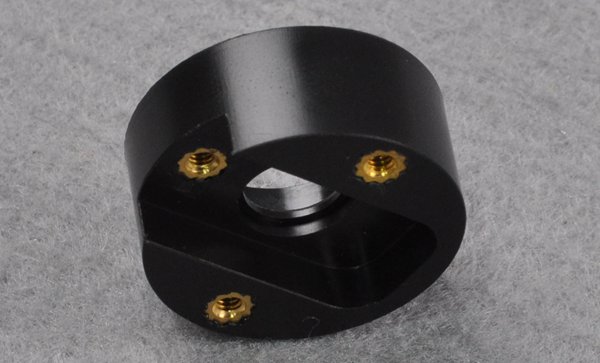
POM parts find use across a diverse range of industries due to their durability and other beneficial properties. Below are the different applications of POM parts.
Electrical and Electronic Parts
POM is electrically insulating. Hence, it can be used to produce switches and connectors for protecting electronic parts.
Medical Devices
Due to POM’s biocompatibility, it is utilized in the medical industry to make surgical tools, medication systems for administration, and other medical equipment.
Automobiles
POM plastic is used in several interior and exterior automotive parts, including fuel system components and window lift gears.
Household items
POM plastic components are frequently used to create handles, buckles, zippers, and other parts for household items and appliances.
WayKen's POM Plastic Machining Services
WayKen’s plastic machining services for POM with precision CNC machines and a team of skilled professionals dedicated to delivering quality components with tight tolerances. Whether it’s prototyping or part production, we can meet different requirements of various industries, including automotive, electronics, medical, and so on. Our commitment to quality control and fast lead time to help your products move into the market quickly. Get a free quote today to start a new project!
FAQs
CNC machining of POM plastic is an appealing option for producing high-precision components with superior mechanical qualities and durability. Its numerous uses in various sectors illustrate how important it is to modern production procedures.
Although challenges such as cracking and deformation are encountered during the process, the pros of CNC machining POM far outweigh its cons.
FAQs
What is the difference between POM and POM C?
A procedure known as copolymerization is used to create POM-C, also known as acetal copolymer. The material has increased impact resistance, toughness, and higher chemical resistance compared to POM since a comonomer was added during the polymerization process.
What is the temperature range of POM?
Acetal, sometimes called POM (Polyoxymethylene), is a semi-crystalline thermoplastic engineering material with an operating temperature range of up to 180° F (82° C). Acetal has excellent dimensional stability, high strength, and stiffness and is easy to machine.
How durable is POM?
POM is a very durable material with a high level of impact resistance. This material’s resistance to fatigue is so great that it is compared to metal. When a lighter option is needed, it is employed in areas where metal would normally be used.

